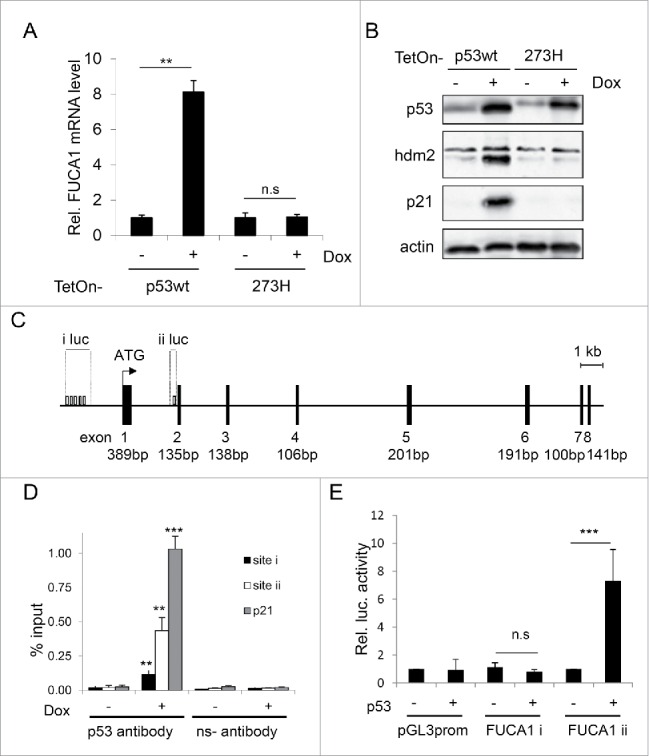Figure 1.

FUCA1 is a direct p53 target gene. (A-B) TetOn-p53wt and TetOn-p53273H Saos2 cells were treated with doxycycline (Dox) for 24 hours. FUCA1 mRNA levels were quantified by qRT-PCR and expressed as Relative Fuca1 mRNA level and represented as mean ± SD (n = 2 independent experiments, 6 replicates, one way Anova *** p < 0.0001; n.s = non significant)(A). p53, Hdm2 and p21expression were assessed by western blotting. Immunoblot against actin was used as a loading control (B). (C) Identification of 2 potential p53 binding site in the sequence of FUCA1 gene: one in the promoter region (i) the other one in the first intron (ii). (D) Chromatin immunoprecipitation (ChIP) was performed on TetOn-p53 cells treated with Dox for 24 hr. Immunoprecipitations were carried out with anti-sera against p53 or a nonspecific antibody (Ns). The % input of coprecipitating DNAs were calculated by quantitative PCR and presented as mean ± SD (n = 3 independent experiements, one way Anova: Site i **p = 0.0053, Site ii**p = 0.0006, p21 ***p < 0.0001). (E) Saos-2 cells were co-transfected with either an empty pcDNA3 vector or a wild-type-p53-expressing construct along with luciferase reporter constructs containing potential p53 binding sites i–ii (pGL3-FUCA1 i-ii) or vector control (pGL3 prom). Luciferase activity was analyzed 24 h after transfection and expressed as the relative fold increase relative to vector control (n = 4 independent experiements, one way Anova: Site i n.s p = 0.6751, Site ii ***p < 0.0001).
